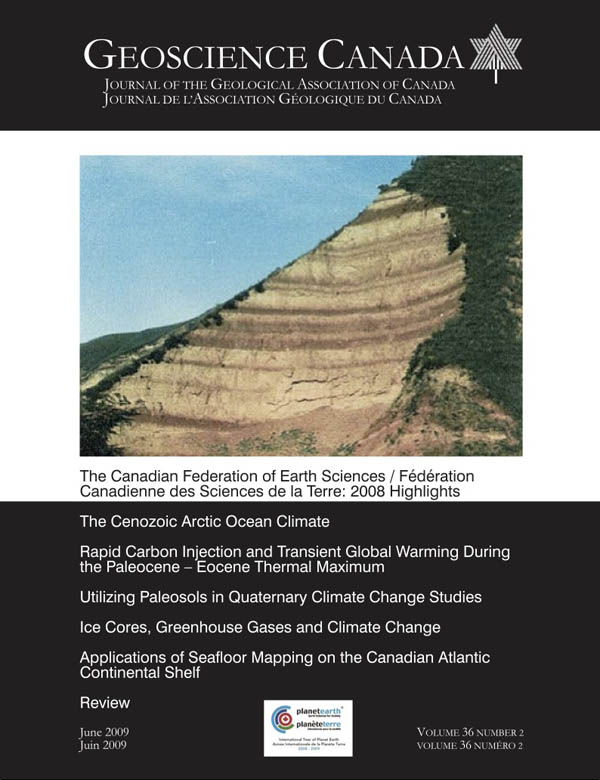Abstract
Canada’s final mapping frontier is its offshore territory. Compared to Canada’s landmass, only a limited portion of Canada’s seafloor has been mapped using the modern technology of multi-beam sonar. Where this high-resolution mapping technique has been applied on Canada’s Atlantic continental margin, insight has been gained into the studies of seafloor habitat mapping, Quaternary history and sea-level change, sediment bedforms and dynamics, and seafloor conditions for in-stream tidal power. Seafloor habitat mapping in Canada provides the knowledge base to effectively manage offshore fisheries, evaluate marine protected areas, minimize the environmental impact of offshore development, and resolve seafloor-use conflicts. Multibeam sonar mapping has revealed a complex glacial landsystem developed on the Canadian Atlantic continental shelf and supports the concept of the late glacial maximum reaching the shelf edge. The application of multibeam sonar technology offers unprecedented images of bedform geomorphology and this knowledge is crucial to understanding sediment mobility and its effect on seafloor habitat, engineering, and infrastructure. To minimize the risk to engineering infrastructure on the seabed, planning of tidal-energy developments in regions of large tidal range requires detailed information about the water depth, seafloor substrate and sediment mobility, and long-term seabed change garnered using multibeam sonar mapping techniques.
SOMMAIRE
L’ultime frontière de la cartographie du Canada est son territoire extracôtier. Par rapport à son territoire continental, seule une faible portion du territoire extracôtier canadien a été cartographié par la technique moderne d’imagerie sonar multifaisceaux. Là où cette technique de cartographie de haute résolution a été utilisée sur la marge continentale canadienne atlantique, on a pu faire des progrès dans l’étude de cartographie d’habitat du fond marin, de l’histoire quaternaire des fluctuations du niveau de la mer, de la morphologie des couches et de la dynamique sédimentaires, ainsi que des caractéristiques du fond marin en vue de l’installation de centrales marémotrices. La cartographie d’habitat du fond marin permet de constituer une base de connaissances nécessaires pour gérer efficacement la pêche hauturière, établir la valeur des zones marines protégées, minimiser les incidences environ-nementales des activités de mise en valeur extracôtières, et résoudre les conflits d’utilisation des fonds marins. La cartographie par imagerie sonar multifaisceaux a montré qu’un système complexe de terres émergées s’est développé sur le plateau continental atlantique du Canada et qui correspond au concept d’un maximum glaciaire ayant atteint la limite du plateau continental. L’utilisation de la technologie sonar multifaisceaux permet d’obtenir des images sans précédents de la morphologie des dépôts, et ces connaissances sont cruciales pour comprendre la mobilité des sédiments et les répercussions sur l’habitat du fond marin, les aménagements et les infrastructures. Dans le but de minimiser les risques sur les infrastructures installées sur le fond marin, la planification d’installations marémotrices en zones de marées à grandes variations exige des informations détaillées sur la profondeur d’eau, la nature du fond marin et la mobilité des sédiments, ainsi que sur les changements à longs termes obtenues par l’utilisation de technique de cartographie sonar multifaisceaux.
